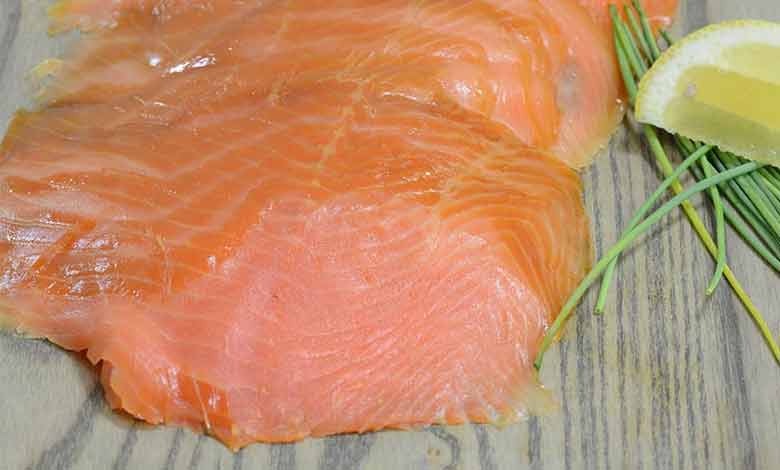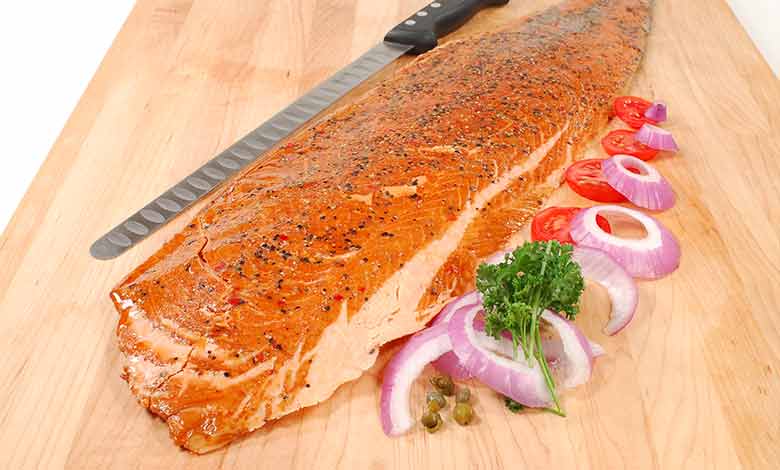Generations ago, Indigenous groups in North America’s Pacific Northwest devised a way to preserve salmon for long storage, relying on salting and smoking to keep it fresh. This created a rich food source, central to their culture and diet. Across the Atlantic, Europe embraced fish smoking, and by the 19th century, Scotland had developed a unique cold-smoking technique, using oak to impart a refined taste to fish, that soon became popular among the upper class. When Jewish immigrants later brought their own curing methods to New York, they invented “lox”—a thin, brine-cured salmon slice that has since become a brunch classic. Today, this delicacy is enjoyed worldwide, celebrating both traditional methods and new variations that have transformed its meaning from preserving food into a culinary favorite.
Origins
Its name basically says it all. Smoking is a process of preserving meat that has been in place for centuries. It is said that people from ancient times first discovered the benefits of smoking food. To prepare for the long winters, people smoked their fish in order to preserve it. So basically, smoked salmon originates from freshly caught fish that undergoes salting and smoking at high temperatures in order to keep it edible for an extended period of time.
The Native American Alaskans held this fish in high respect, and they believed that if someone were to mishandle the fish, the great spirits of the sea would drive it away from the waters. The Greeks and the Romans also enjoyed it, having it served at their lavish festivals. Smoked Salmon is a dish that has always called for a celebration. Today, it is an integral part of our diet, and although it is considered a luxury item, steady supply has maintained the prices at relatively the same levels they were years ago, making it an accessible food item. Highly versatile, this is an easy product to enjoy, one of the reasons being its resiliency.

The Birth of Lox
Gourmet smoked salmon consumption remained successful for thousands of years, reaching its height during the Middle Ages. During this time, people served it in soups and salads, which was thoroughly enjoyed by almost every citizen.
The 19th Century saw the beginnings of the American smoked salmon industry, first in the West Coast, where wild Pacific fish from Alaska and Oregon were caught from spring to fall. During WWII a method of smoking was developed in order to further preserve salted fish, so it could travel longer. This was called Lox, and cemented the association between Pacific smoked salmon as the 'classic' kind of smoked salmon, and became so popular that even today people refer to any variety as 'lox' - even though this old method of smoking has gone to disuse- and most smoked salmon primarily comes from the North Atlantic.
The development of the railroad and other forms of long distance transportation created a greatly expanded market for Norwegian smoked salmon, which could now be carried as far as the East Coast. After the wars, a boom of European immigration to America brought with it many cultures with long and ancient traditions of fish-smoking, which further helped develop and perfect this new technique. New York City, especially Brooklyn, emerged as the fish-smoking capital of America, with the appearance of many now traditional smokehouses, especially in Brooklyn. The Hudson Bay Company became the nation's first large importer of salmon, soon joined by other giants like Nova Scotia Food Products, Marshall Smoked Fish Co., amongst others, which brought their Pacific salmon from the West and smoked it in Lower Manhattan, and pioneered the importation of Nova Scotia or North Atlantic fish. In the 1960s the industry received an even greater push, with the commercialization of refrigerated rail cars. The rest, as they say, is history.
A different type of farming
Soon, commercial fishing of salmon became so prevalent and out of control, wild salmon became nearly extinct due to overfishing and pollution. Once this occurred, people began to consider it a luxury item and prices went up.
In order to protect the species, laws were put in place that regulated the fishing of this fish, which is why wild smoked salmon today is usually more expensive than the farmed variety. Overall, salmon is more commonly farmed, that is, big and small entrepreneurs will "grow" it in lakes, and then smoke it on premises or sell them to smokehouses. Only a connoisseur will be able to tell the difference between farmed or wild, although many will argue that the latter is superior in taste (those who love the higher-fat content are better off with the farmed variety, since wild salmon tends to be leaner). Most of North America's smoked salmon usually comes from the Pacific Northwest, the North Atlantic (usually labeled Scottish smoked salmon, or Nova), or is imported from Norway, although Chile has now risen as a huge competitor.

Smoking
Salmon is smoked when it is under three years of age, which preserves the full freshness and flavor of the fish. There are two ways of curing salmon (which basically means salting it), the process that precedes smoking: wet cure or dry cure. Today, most of the consumer smoked salmon undergoes wet curing, where the salmon is submerged in brine (salty) solution. The smoking process can vary, and two techniques are used: hot-smoking or cold-smoking (which both fall under the wet cure process), although cold-smoking is the more predominant. These traditional methods are very similar; the fish is placed in a brine solution (a mixture of salt and pepper, sugar and spices), and then taken to the smokehouse. The main variation lies in the length of the smoking, and the temperature used. Depending on the size of the fish, it will be smoked for a longer or shorter period of time. Flavor will vary according to the type of salmon used (wild or farmed, Atlantic or Pacific species, etc), and smoking techniques. Cold smoked salmon tends to be more subtly smoky, and more oily and smooth, while the hot-smoked variety is much more "smoky" and much drier. The popular Scottish smoked salmon uses wood chips from old whisky or sherry casks, for a very distinctive flavor. Most salmon that you find in supermarkets is typically cold-smoked from farmed salmon.
Culinary Traditions and Celebratory Dishes
Today, smoked salmon has become a star ingredient in global cuisine, celebrated for its rich, smoky flavor and versatility - it can take you from breakfast to dinner oh-so-easily. Paired with bagels, cream cheese, and fresh herbs it’s a brunch essential and American iconic combo. But beyond breakfast, smoked salmon’s role has expanded. It’s a favorite topping for avocado toast, a centerpiece in sushi rolls, and even a popular addition to pasta dishes and salads for a savory twist. Rich in protein, high in Omega 3 fatty acids, it not only adds flavor but can become a nutritional powerhouse.
In Europe, smoked salmon is used in appetizers and elegant hors d’oeuvres, paired with delicate flavors like dill, capers, or lemon on crusty bread. Scandinavian cuisine embraces it in smørrebrød—open sandwiches that highlight the fish’s flavor with fresh herbs and tangy accents. Meanwhile, Japan has introduced it as a sushi and sashimi option, where its color and taste offer a unique contrast to traditional fish.
Smoked salmon’s place in modern dining spans cuisines and meals!